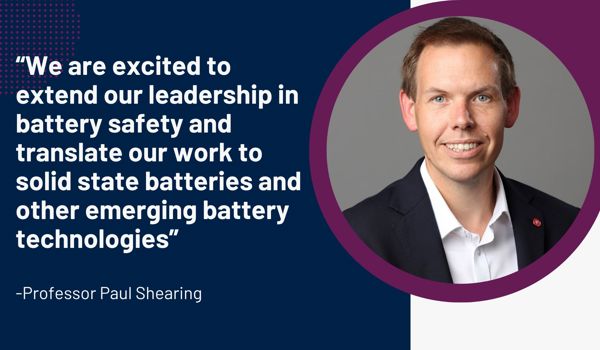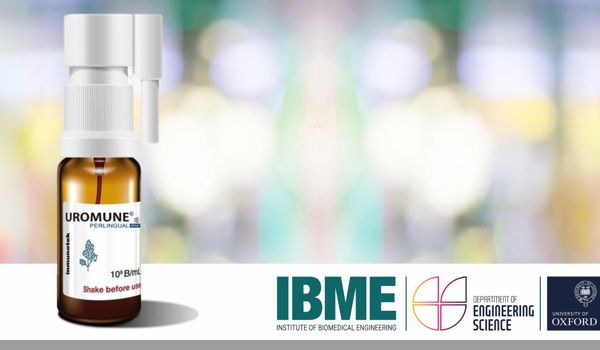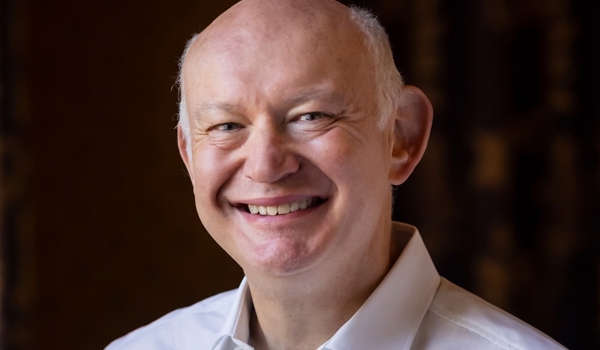06 Nov 2018
Outreach Event: Uncovering the secrets of the Black Panther
As any fan of Marvel’s Black Panther could tell you, the nation of Wakanda is home to scientific marvels far beyond anything the outside world has ever seen.
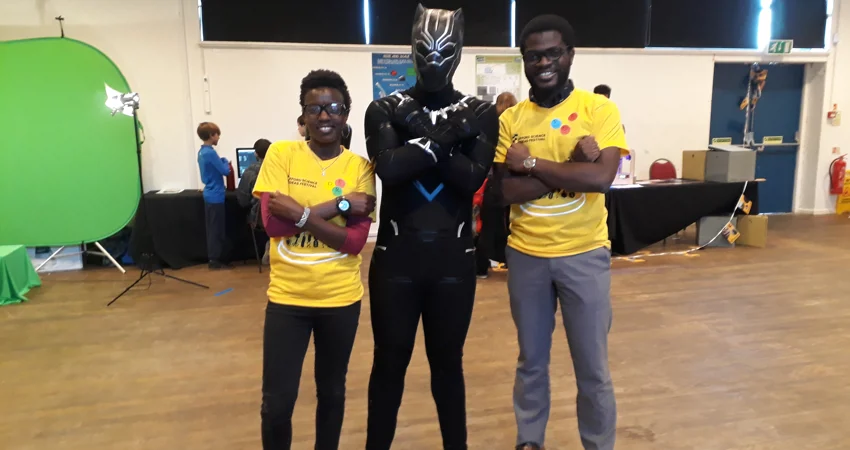
Until now, that is. The Black Panther, Prince T’Challa himself, touched down in Oxford for the opening of the first Wakandan International Outreach Centre – with the help of academics from the Department of Engineering Science.
As part of the IF Oxford Science and Ideas Festival, the community centre in Blackbird Leys was transformed into a hub of talks, demonstrations and activities, revealing the cutting-edge science that could be making our world a little more like T’Challa’s.
The programme of talks, aimed at families, kicked off with a tour of the real-world alternatives to the technology seen in the movie, presented by three members of Engineering Science staff from the Oxford Thermofluids Institute (OTI). Aerospace engineer Gladys Ngetich was inspired by Wakanda’s invisibility shields, telling the audience all about research taking place into ‘invisible tanks.’ Displaying live footage of their surroundings, these could blend into the background, taking any enemy by surprise.
Dr Priyanka Dhopade took her inspiration from the Black Panther suit, which absorbs and redistributes the kinetic energy of bullets, punches and other impacts. This, she explained, is seen in the likes of hybrid cars, which embrace regenerative braking technology: rather than wasting energy in the form of heat when the brakes are applied, they capture the car’s kinetic energy in batteries and store it until it can be usefully redistributed elsewhere.
Vibranium, the versatile metal that underpins Wakanda’s success, has its real life aquivalent in graphene, OTI researcher Olufemi Awe told the audience. This incredible material consists of a single sheet of carbon atoms, arranged in a hexagonal pattern. It's one of the thinnest substances ever made, and is both extremely flexible and at least a hundred times stronger than steel.
A recurring theme of the event was to encourage diverse groups of people to engage with science through storytelling and art and by highlighting BAME role models in STEM.
Meanwhile, the venue was packed with stalls and demonstrations. A touch of movie magic was provided by Film Oxford, who green-screened visitors into a scene from the movie, while Hollywood stuntman Jon Xue Zhang showed off his fighting skills.
Visitors also had the chance to meet Stephen Turner, from the Science and Technology Facilities Council. As well as sharing his advice for aspiring scientists, he’d set up a stall exploring the superfast floating trains that service Wakanda’s vibranium mines.
Armed with a bucket of liquid nitrogen, Steven demonstrated how maglev trains work: supercooling a pair of opposing magnets increases their strength, making the carriage ‘float’ above the tracks. In this way, the train is not slowed down by friction with the track, and can achieve much higher speeds.
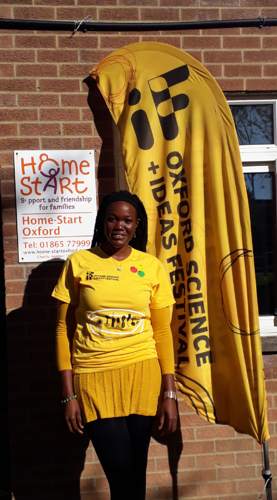 From the Institute of Biomedical Engineering, Sharlayne Waller gave a talk, asking ‘Can We Mend A Spinal Cord Like Shuri?’ She focused on the scene in the movie which sees Martin Freeman’s character hit with a bullet, severing his spinal cord. T’Challa’s sister Shuri sets to work, and mends the damage overnight.
From the Institute of Biomedical Engineering, Sharlayne Waller gave a talk, asking ‘Can We Mend A Spinal Cord Like Shuri?’ She focused on the scene in the movie which sees Martin Freeman’s character hit with a bullet, severing his spinal cord. T’Challa’s sister Shuri sets to work, and mends the damage overnight.
“I thought of becoming a medical doctor,” explained Sharlayne, “but when I looked into it I realised I wanted to be involved in bringing technology into medicine.” She described her research into a 'hydrogel' which can be used to grow cells outside the human body, before being inserted into the damaged regions to reconnect the severed nerves. So while we can’t mend a spine like Shuri (at least not quite yet), we’re certainly getting close.
Back in the main hall, our researchers had set up a stall providing visitors with an insight into their work on the newest generation of jet engines. Gladys, Olufemi and Priyanka were surrounded by thermal imaging cameras, origami planes and levitation demos (which suspended a globe in the air between two magnets), as they brought the work of the OTI to life. Using a headset, they were even able to offer an exclusive virtual reality tour of their lab.
From structural failure to engineering innovation
Just across the road at the City of Oxford College, Dr Martin Walker was hosting another event as part of the science festival.
His talk, titled ‘From Structural Failure to Engineering Innovation’, examined how engineers learn from failure. Whether that’s shopping centres collapsing just days before their grand opening, or bridges that aren’t built to withstand high winds, these failures are an opportunity to ensure that we do better next time.
Sometimes understanding how something fails can even lead to interesting new innovations. For example, one thing that crushes easily is the humble Coke can – which Martin explained has similar proportions to a rocket. For this reason, NASA have undertaken the Shell Buckling Knockdown Factor Project: having built what amounts to a giant coke can, they carefully apply increasing load until it buckles, in order to understand the failure process and design better rockets.
Shell Buckling Test
The same process involved when a can (or rocket) crushes can be controlled to make useful shape-changing structures, such as a texture changing wing (see image).
“The message I’ll leave you with,” Martin told the audience, “is this. Don’t be disappointed if you break something; maybe the way it breaks can be adapted to invent something useful...”
The Department does a wide range of outreach work for schools and young people.


